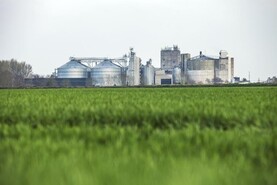Getting nitrogen on to spring crops in the early stages of growth is very important in a late season.
Putting nitrogen in the seedbed will help crops to get off to a good start and provide nitrogen as soon as it is needed.
This is very important for spring malting barley, as nitrogen becoming available to the crop later in the season can contribute to higher protein contents.
For crops in the ground that did not receive a large percentage of their nitrogen in the seedbed, then the remainder of that nitrogen should be applied once the tramlines are visible.
All nitrogen should be applied to spring barley crops once the tramlines are visible.
Rates
Soils in index 1 for nitrogen can receive 135kg N/ha (108 units/ac). If you have proof of high yields in the past three years, you can apply more nitrogen. For every tonne of grain over 6.5t/ha (2.6t/ac), you can apply another 20kg N/ha.
Some farmers cut nitrogen rates in order to try to meet protein specifications for malting barley, but it is a risky strategy.
Proteins will be affected by the weather. If the weather is dry, then nitrogen could become more available later in the season when rain helps to mineralise it.
Protein will be reduced with a good-yielding crops as the nitrogen will divide out between the different grains.
If there are more grains, then the protein will likely be lower, but if you don’t have a high yield, your protein is likely to be higher.






 This is a subscriber-only article
This is a subscriber-only article










SHARING OPTIONS: